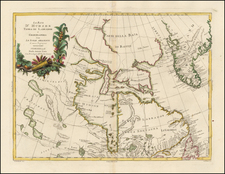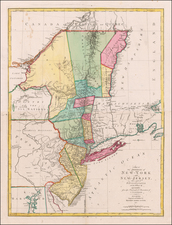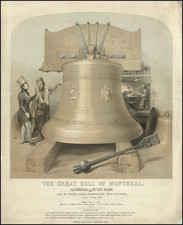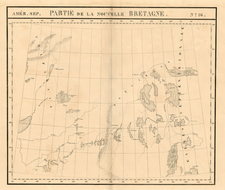Rare Cadastral Map of Ottawa and Vicinity
Rare late 19th Century cadastal map of Ottawa, compiled by civil engineer John Byrne Brophy and dated 1895.
Prepared by Brophy, who was a long time employee of the Public Works Department, the map shows Ottawa divided into 8 wards, along with excellent detail beyond the limits of the City.
The map is noteworthy for its coverage of the area around Ottawa, offering a glimpse of the expanding footprint of the city in the late 19th Century. The names of over landowners of all sections of the map which were not yet platted for development are given, with dozens of early landowner's names shown.
The continuing importance of the logging industry is clearly shown. Between Lemieux Island and the mainland, an elaborate illustration is given showing the handling of logs, timber, piers and booms floating down river toward the series of islands in the north which processed the timber for shipping.
Further east, the Parliamentary Building and other largert buildings are shown. In the south, Lansdowne Park (named in 1890) and the Capital Lacrosse Grounds are shown, with the Cattle Sheds and Poultry area just to the north of the grandstand. In the southeast, the Central Experimental Farm is shown, less than 10 years after its creation.
The map notes the location of nearly 200 Fire Alarm Signal Boxes, with a list of major buildings by ward below.
Central Experimental Farm (CEF)
The Victorian era was a time of great interest in the advancement of natural sciences and many nations built zoos, observatories, botanical gardens, and experimental farms. Canada followed suit and as the result of lobbying by John Carling, the Minister of Agriculture, and William Saunders, the first director of the research branch, the "Act Respecting Experimental Stations" came into force in 1886. The CEF started out with 188 hectares, chosen because of their proximity to Parliament Hill but (at that time) outside the city. Over the next few years the site was prepared by improving the land, building the facilities, and planting the Arboretum and forest belt. Early research projects focused only on entomology, botany, and horticulture.
Ottawa
The Ottawa area was first settled in 1800 by Philemon Wright of Massachusetts who brought 6 families and 25 laborers to start an agricultural community on the north bank of the Ottawa River at the portage to the Chaudière Falls. Wright discovered that transporting timber by river from the Ottawa Valley to Montreal was possible, and the area was soon booming based almost exclusively upon the timber trade.
After the War of 1812, the government began sponsored immigration schemes which brought over Irish Catholics and Irish Protestants to settle the Ottawa area. Along with French Canadians who crossed over from Quebec, these two groups provided the bulk of workers involved in the Rideau Canal project and the booming timber trade, both instrumental in putting Ottawa on the map.
The area grew significantly when the canal was completed by Colonel John By in 1832. It was intended to provide a secure route between Montreal and Kingston on Lake Ontario, by-passing the stretch of the St. Lawrence River bordering New York State. Construction of the canal began at the northern end, where Colonel By set up a military barracks on what later became Parliament Hill, and laid out a townsite that soon became known as Bytown. The west side of the canal became known as "Uppertown" where the Parliament buildings are located, while the east side of the canal (wedged between the canal and Rideau River) was known as the "Lowertown". Ottawa became a center for lumber milling and square-cut timber industry in Canada.
Bytown was renamed Ottawa in 1855, when it was incorporated as a city. On December 31, 1857, Queen Victoria selected Ottawa as the Capital of Canada, largely motivated by its central location between Canada East and Canada West, although it was then just a small logging town.
Following the creation of the Dominion of Canada in 1865, Queen Victoria chose Ottawa as the capital of Canada in 1867 and the parliament buildings on Parliament Hill were soon completed. Also at this time, increased export sales led it to connect by rail to facilitate shipment to markets especially in the United States.
Rarity
The map is apparently extremely rare. OCLC locates only a reduced size photocopy of the map at Queens University, noting that it had been "Reproduced from original held in the National Map Collection."












![[ Cook's Discoveries in Russian America ] Chart of the NW Coast of America and the NE Coast of Asia explored in the Years 1778 & 1779 . . .](https://storage.googleapis.com/raremaps/img/small/68831.jpg)
![[French & Indian War] Carte Des Possessions Francoises et Angloises dans le Canada et Partie de la Louisiane . . . 1756](https://storage.googleapis.com/raremaps/img/small/94026.jpg)


